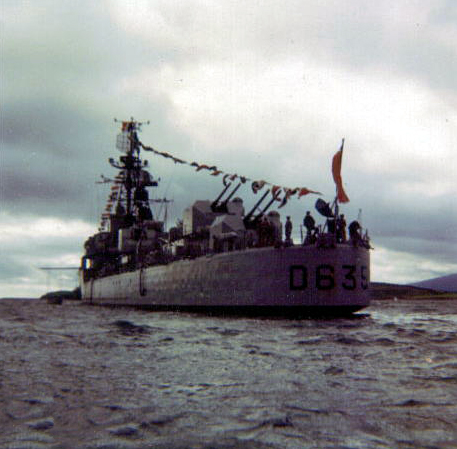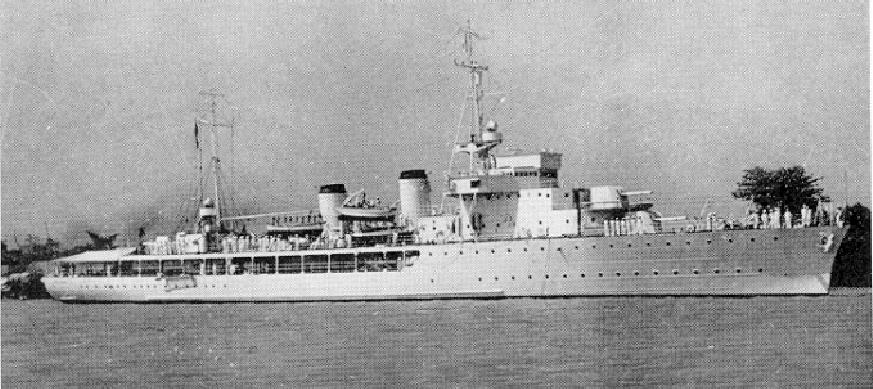|
French Ship Forbin
Six ships of the French Navy have been named ''Forbin'' in honour of the 17th century admiral Claude Forbin-Gardanne: * A first-class propeller aviso (1859–1884) * , a second-class cruiser (1885–1921) * An auxiliary patrol boat of the Free French Forces (1944). Originally a cargo ship, she was captured by the British in Gibraltar and requisitioned. She was eventually scuttled in Arromanches to be used as an artificial harbour on the 9 June 1944, in the context of the Invasion of Normandy Operation Overlord was the codename for the Battle of Normandy, the Allied operation that launched the successful invasion of German-occupied Western Europe during World War II. The operation was launched on 6 June 1944 (D-Day) with the Norm .... * , a (1928–1952) * , a , (1955–1992) * , a commissioned in 2008 {{DEFAULTSORT:Forbin, French Ship French Navy ship names ... [...More Info...] [...Related Items...] OR: [Wikipedia] [Google] [Baidu] |
French Navy
The French Navy (french: Marine nationale, lit=National Navy), informally , is the maritime arm of the French Armed Forces and one of the five military service branches of France. It is among the largest and most powerful naval forces in the world, ranking seventh in combined fleet tonnage and fifth in number of naval vessels. The French Navy is one of eight naval forces currently operating fixed-wing aircraft carriers,Along with the U.S., U.K., China, Russia, Italy, India and Spain with its flagship being the only nuclear-powered aircraft carrier outside the United States Navy, and one of two non-American vessels to use catapults to launch aircraft. Founded in the 17th century, the French Navy is one of the oldest navies still in continual service, with precursors dating back to the Middle Ages. It has taken part in key events in French history, including the Napoleonic Wars and both world wars, and played a critical role in establishing and securing the French colonial ... [...More Info...] [...Related Items...] OR: [Wikipedia] [Google] [Baidu] |
Claude Forbin-Gardanne
Claude, chevalier, then count de Forbin-Gardanne (6 August 1656 – 4 March 1733) was a French naval commander. In 1685–1688 he was on a diplomatic mission to Siam. He became governor of Bangkok and a general in the Siamese army, and left Siam shortly before King Narai fell ill and was deposed by a coup d'état. Biography Claude de Forbin was born in the village Gardanne in the Provence, as a member of a family established in Marseilles in the 14th century. Later divided into several branches, Claude de Forbin was the most famous of the branch Forbin Gardanne. High-spirited and ungovernable in his boyhood, he ran away from his home, and through the influence of an uncle entered the navy, serving his first campaign in 1675. For a short time he quit the navy and entered the musketeers. There, he killed the chevalier de Gourdon in a duel, and was sentenced to death by the Parliament of Aix; he managed to obtain a grace and joined the Navy under his brother's identity. He served u ... [...More Info...] [...Related Items...] OR: [Wikipedia] [Google] [Baidu] |
Aviso
An ''aviso'' was originally a kind of dispatch boat or "advice boat", carrying orders before the development of effective remote communication. The term, derived from the Portuguese and Spanish word for "advice", "notice" or "warning", an ''aviso'', was later adopted by the French and Portuguese navies to classify their medium-sized warships designed for colonial service. The term continued to be used in the French Navy to classify the patrol frigates until 2012, when the remaining ships of the class were reclassified as offshore patrol ships. It is equivalent to the modern use of "sloop" in other countries. Description The ''Dictionnaire de la Marine Française 1788–1792'' (by Nicolas-Charles Romme) describes ''avisos'' as "small boats designed to carry orders or dispatches". This use became obsolete with the development of means of communicating detailed information at a distance. French ''avisos'' used during World War I and World War II had displacements of 300–7 ... [...More Info...] [...Related Items...] OR: [Wikipedia] [Google] [Baidu] |
Cruiser
A cruiser is a type of warship. Modern cruisers are generally the largest ships in a fleet after aircraft carriers and amphibious assault ships, and can usually perform several roles. The term "cruiser", which has been in use for several hundred years, has changed its meaning over time. During the Age of Sail, the term ''cruising'' referred to certain kinds of missions—independent scouting, commerce protection, or raiding—fulfilled by frigates or sloops-of-war, which functioned as the ''cruising warships'' of a fleet. In the middle of the 19th century, ''cruiser'' came to be a classification of the ships intended for cruising distant waters, for commerce raiding, and for scouting for the battle fleet. Cruisers came in a wide variety of sizes, from the medium-sized protected cruiser to large armored cruisers that were nearly as big (although not as powerful or as well-armored) as a pre-dreadnought battleship. With the advent of the dreadnought battleship before World W ... [...More Info...] [...Related Items...] OR: [Wikipedia] [Google] [Baidu] |
Free French Forces
__NOTOC__ The French Liberation Army (french: Armée française de la Libération or AFL) was the reunified French Army that arose from the merging of the Armée d'Afrique with the prior Free French Forces (french: Forces françaises libres, label=none or FFL) during World War II. The military force of Free France, it participated in the Italian and Tunisian campaigns before landing in France with the allies liberating the country and occupying Germany until it had forced its capitulation in 1945. History The French Liberation Army was created in 1943 when the Army of Africa () led by General Giraud was combined with the Free French Forces of General de Gaulle. The AFL participated in the campaigns of Tunisia and Italy; during the Italian campaign the AFL was known as the French Expeditionary Corps in Italy ( ''en Italie or CEFI)'' making a quarter of the troops deployed. The AFL was key in the liberation of Corsica, the first French metropolitan department to be liberate ... [...More Info...] [...Related Items...] OR: [Wikipedia] [Google] [Baidu] |
Arromanches
Arromanches-les-Bains (; or simply Arromanches) is a commune in the Calvados department in the Normandy region of north-western France. The inhabitants of the commune are known as ''Arromanchais'' or ''Arromanchaises''. Geography Arromanches-les-Bains is 12 km north-east of Bayeux and 10 km west of Courseulles-sur-Mer on the coast where the Normandy landings took place on D-Day, 6 June 1944. Access to the commune is by the D514 road from Tracy-sur-Mer in the west passing through the town and continuing to Saint-Côme-de-Fresné in the east. The D87 road also goes from the town south to Ryes. The D65 road goes east to Meuvaines. About a third of the commune is the urban area of the town with the rest farmland. History Arromanches is remembered as a historic place of the Normandy landings and in particular as the place where a Mulberry harbour artificial port was installed. This artificial port allowed the disembarkation of 9,000 tons of materiel per day. It was on th ... [...More Info...] [...Related Items...] OR: [Wikipedia] [Google] [Baidu] |
Invasion Of Normandy
Operation Overlord was the codename for the Battle of Normandy, the Allied operation that launched the successful invasion of German-occupied Western Europe during World War II. The operation was launched on 6 June 1944 (D-Day) with the Normandy landings. A 1,200-plane airborne assault preceded an amphibious assault involving more than 5,000 vessels. Nearly 160,000 troops crossed the English Channel on 6 June, and more than two million Allied troops were in France by the end of August. The decision to undertake a cross-channel invasion in 1944 was taken at the Trident Conference in Washington in May 1943. General Dwight D. Eisenhower was appointed commander of Supreme Headquarters Allied Expeditionary Force, and General Bernard Montgomery was named commander of the 21st Army Group, which comprised all the land forces involved in the invasion. The coast of Normandy of northwestern France was chosen as the site of the invasion, with the Americans assigned to land at sectors ... [...More Info...] [...Related Items...] OR: [Wikipedia] [Google] [Baidu] |
Forbin D635 In Bantry Bay
Forbin is a French surname. Members of an ancient Provence family (which now has many branches, the principal ones being the ''Forbin des Lasarts'' branch and the ''Forbin Janson'' branch) bearing the name include: * Palamède de Forbin (died 1508), founder of the house * Toussaint de Forbin-Janson (1625–1713), called the ''cardinal de Janson'', bishop * Claude de Forbin (1656-1733), French naval commander * Count de Forbin, officer of the French Navy who served under Suffren during the War of American Independence * Jacques II de Forbin-Janson (1680–1741), Archbishop of Arles * Joseph de Forbin (died 1728) * Louis Nicolas Philippe Auguste de Forbin (1779–1841), French painter * Charles-Auguste-Marie-Joseph de Forbin-Janson (1785–1844), Bishop of Nancy Others with this surname include: * Alfred Forbin (1872-1956), stamp dealer *The fictional character Charles A. Forbin in the film '' Colossus: The Forbin Project'' Location: *Hôtel de Forbin, a hôtel particulier on ... [...More Info...] [...Related Items...] OR: [Wikipedia] [Google] [Baidu] |




